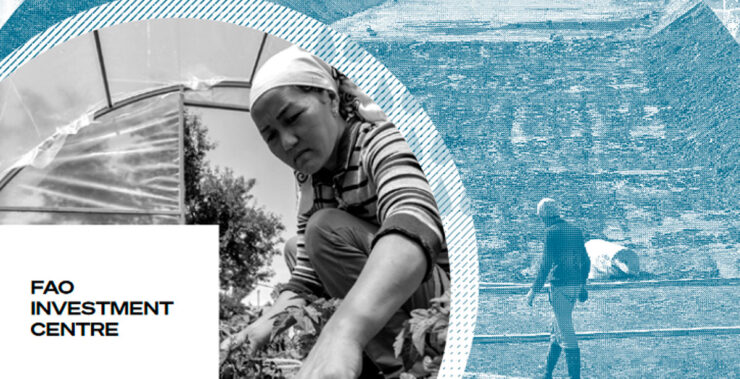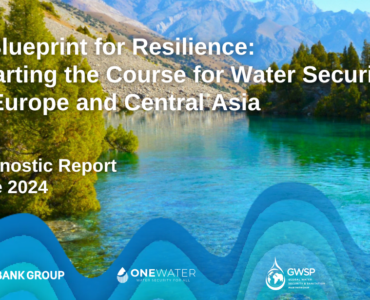The recently published report Modernizing Irrigation in Central Asia: Concept and Approaches by the Food and Agriculture Organization (FAO) of the United Nations presents the results of a year-long study on irrigation in Central Asia. It is meant to serve as a guideline for policymakers and experts on the current state of irrigation systems. The report presents key actions for the modernization of irrigation systems in Central Asia. This article is the summary of major takeaways.
Water availability in Central Asia
Due to climate conditions, less than 10% of the total land area in Central Asia is considered arable, with around 80% of it being irrigated. However, deteriorating irrigation and drainage infrastructure operates below its potential and the irrigated area is severely reduced.
Water resources in Central Asia are not distributed evenly, with Turkmenistan and Uzbekistan relying on regional agreements with neighboring countries for water that originates in Kyrgyzstan and Tajikistan. Among Central Asian republics, water scarcity is one of the worst in Turkmenistan, where 97% of the water originates outside the country.
Water availability would be further exacerbated and Turkmenistan would fall into a category of regions with an absolute water scarcity if not for the transboundary agreements. Only 257 m3/cap/yr of renewable water resources, or tenth of an Olympic-size swimming pool, would be available internally, compared to 4609 m3/cap/yr of total water resources.
In 2012, only 1.4 billion m3 of renewable water resources, or water that is renewed from precipitation, were available internally in Turkmenistan, whereas 80.2 billion m3 of water was entering the country thanks to agreements with neighboring nations. Water scarcity is expected to be further exacerbated because of climate change, with more frequent and severe droughts and, counter-intuitively, more frequent floods due to fluctuations in rainfall.
Impact of water scarcity on agriculture
About 94% of the water is used by agriculture. Around 9% of the GDP of Turkmenistan is attributed to agriculture and around 8% the working population is currently employed in agriculture. These shares are significantly lower compared to the neighboring states but are still significant as Turkmenistan is one of the important exporters of cotton. Agriculture is especially important for rural areas, as 49.6% of the population of Turkmenistan resides in rural areas. Productivity levels and crop yields in Central Asia are considered low by international standards. However, average yields of seed cotton and wheat in Turkmenistan are 2-3 times lower than in other Central Asian republics, standing at just 1.24 and 1.14 tons of product per hectare for seed cotton and wheat, respectively.
Donate to support Turkmen analysts, researchers and writers to produce factual, constructive and progressive content in their efforts to educate the public of Turkmenistan.
SUPPORT OUR WORKSurface irrigation is the only irrigation method in Turkmenistan. More efficient sprinkler and low pressurized irrigation methods are practically non-existent in Central Asia, as only 0.5% of land is irrigated using these methods. About 51% of the irrigation area is equipped with drainage systems such as gravity or pumped systems, with many of those systems in a deteriorated state. Drainage systems help to remove excess water from the field either by gravity, or by pumps, when the level of wastewater is lower than a discharge channel.
Soil degradation and economic loss
Soil salinity is another issue that many areas in Central Asia are facing, making soil unsuitable for farming most crops. Turkmenistan and Uzbekistan are affected by the problem the most, as more than 50% of their irrigated areas are now saline. To try to alleviate salinity levels, Turkmenistan allows only half of the drainage water to be fed into rivers, whereas the rest is sent to natural depressions (e.g., Sarygamysh Lake).
In total, 68% of Turkmenistan’s arable land is affected by land degradation, and the problem is expected to be exacerbated even more in the future because of climate change. Furthermore, it was estimated that up to 378 million USD per year are lost by the agricultural sector due to outdated irrigation systems that result in waterlogging and salinization.
Recommendations
The report outlines five action areas for modernization of the irrigation and drainage sector in Central Asia:
- policy and legislation to enable modernization;
- institutional reforms that will support modernization;
- system modernization for improved service delivery;
- modernizing farmers’ agriculture practices;
- building knowledge and information systems.






